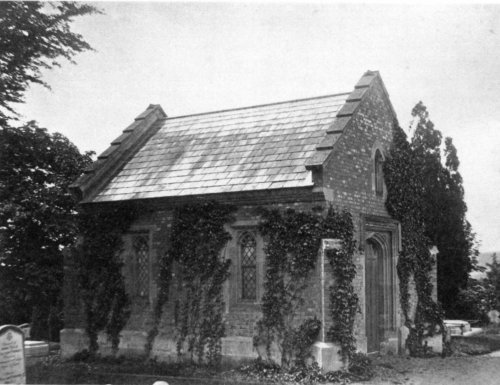West Hill Cemetery - TrustNews Dec 18
On 11 November 2018 the country paused to remember the centenary of the First World War Armistice. It was also a more local anniversary. Some 78 years previously, on 11 November 1840, the Bishop consecrated the Anglican section of the West Hill cemetery on what was then the outskirts of Winchester. The early years of the nineteenth century had seen dramatic rises in population, with Winchester’s increasing by 62 per cent between 1801 and 1841. Church graveyards were becoming full, with the Hampshire Chronicle noting “In this ancient city, where scarcely any of our parishes are provided with adequate room for interment the need of an additional and ample cemetery will be readily acknowledged“(1). When, at the end of that same month, the Dean and Chapter announced they would no longer allow the use of the Cathedral churchyard, the need for a new cemetery became pressing (2).
An Act of Parliament was duly passed on 23 March 1840 authorising a private cemetery company in Winchester, financed by £5,000 of £10 shares. A site was identified consisting of 7 acres of land, beside Barnes Lane (today St James’s Lane)(3). The land was laid out rapidly, and by November two chapels, a lodge to serve as a Sexton’s house and walls had been erected around the site. All of the buildings were designed by Owen Browne Carter, whose work can be identified through other Winchester buildings(4).“
The cemetery was divided into two sections, for Anglicans and non-Anglicans. The smaller non-conformist chapel was to be found directly opposite the current war memorial, and the section for those who were not Anglican covered much of the lower ground towards the railway line, beyond the chapel. The lodge garden was reduced in size at the start of the twentieth century to provide more space for Anglican burials. The Anglican chapel towered over the non-conformist area, being found close to where the large cross to the Gosling family is found today. The two sections were separated by a wall, some of the top of which is still visible behind the war memorial(5). The path did not extend beyond the chapel, with the exit to the university being added at a later date.
The cemetery was well used, with there being 22,369 interments on the site(6)“. Until 1914, when the cemetery at Morn Hill opened, it was the largest and burial place in Winchester. There are many ‘pauper’ burials, and although most are not marked by headstones, it is clear from the records that the low-lying ground close to the houses on Peninsula Road is where many of those bodies would have been placed. By 1900, the cemetery was becoming full; the two chapels were demolished to provide space for extra burials, with current research Suggesting this happened between 1920 and 1925.
By 1920 income was falling due to lack of space, and the cemetery was becoming unkempt. Those running the cemetery wanted the City Council to take it over, but Parliamentary approval to do this was not obtained until 1953. Once this was done, West Hill was closed to new burials (unless a family already owned an unused plot) and it undertook a major programme to make good the site. Due to planned removals - and with some considerable opposition - between the 1950s and 1980s the number of headstones on the site was reduced from 9,000 to around 2,000 today. Today the site remains as a nature reserve, as well as a major thoroughfare between the university and the city.
A team from the university are researching the history of the West Hill cemetery and are keen to hear from anyone who is interested in being involved, either through setting up a ‘Friends of‘ society, or by undertaking work on the site or researching its records. We are especially keen to hear from anyone who may have photographs of the cemetery from any point in its history. Please do contact us at WestHillC@winchester.ac.uk. For further information on notable burials at West Hill, please see our soon to be updated website at www.westhillcemetery.org.uk.
1 Hampshire Chronicle, [hereafter HC) 2 September 1839.
2 HC, 30 September1839.
3 Hampshire Record Office (hereafter HRO) 34M91W/390-393
4 Robin Freeman, The Art and Architecture of Owen Browne Carter (1806-1859), Hampshire Papers number 1 (Winchester: Hampshire County Council, 1991).
5 The wall is visible on early Ordnance Survey Maps of Winchester from the 1870s but was gone by the 1930s. Town Plans 1:500 1st Edition [TIFF geospatial data], Scale 1:500, Tile: hamp-1504113017, Updated: 30 November 2010, Historic, Using: EDINA Historic Digimap Service,
6 The burial registers record 19,083 interments in the consecrated section and 3,286 in the unconsecrated section. HRO W/J3/1-6, plus the two current registers in the care of Winchester City Council. In addition to this there are an as yet unknown number of burials of still-born children, many of whom were put in the same coffins as adults and are only recorded in the Order Books. See HRO W/J3/12-15.

The non-conformist Chapel, West Hill Cemetery
© Winchester City Council. Provided by Hampshire Cultural Trust
